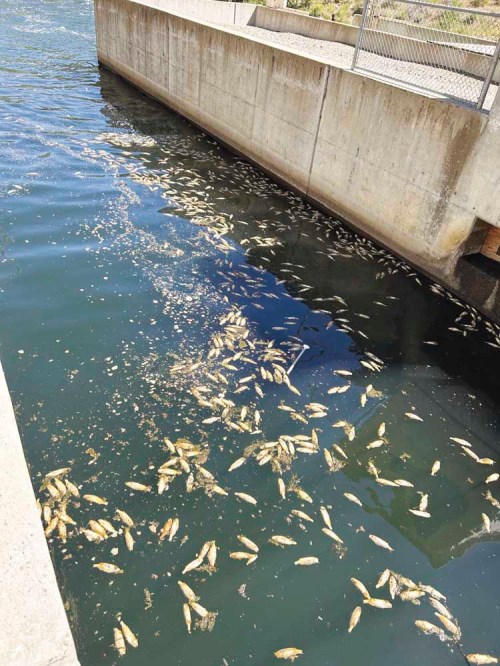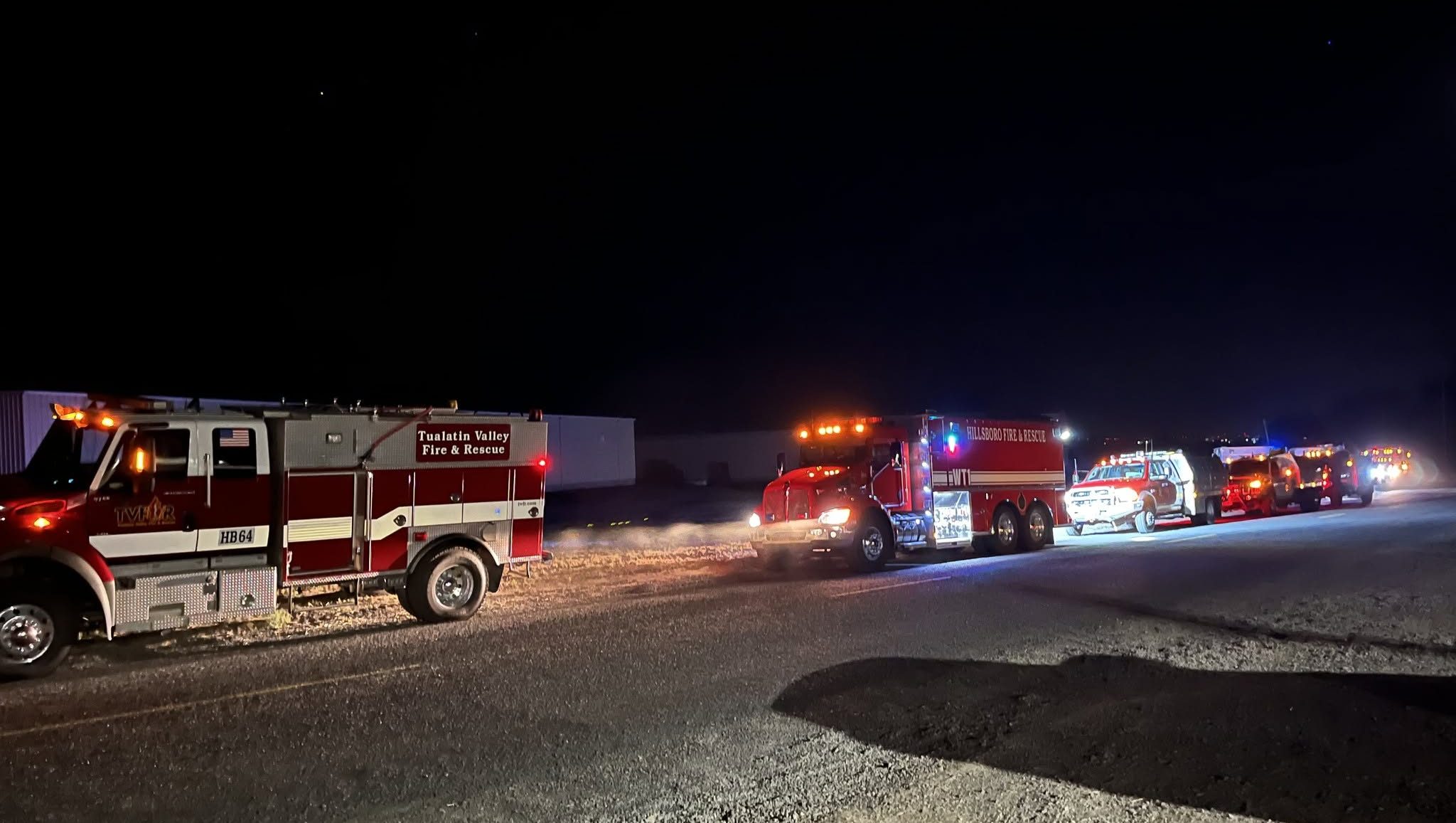Algae bloom in Thief Valley Reservoir does not prompt fishing limits
Published 10:00 am Sunday, August 25, 2024

- Dead yellow perch float Aug. 19, 2024, in the Powder River just below Mason Dam.
BAKER CITY — The health warning due to an algae bloom at Thief Valley Reservoir means the Oregon Department of Fish and Wildlife likely won’t cancel the fishing bag and size limits.
The agency has done so in several years when the reservoir, which supplies irrigation water to the Keating Valley, nearly empties. In some years ODFW allowed people to catch fish by hand or dip net when the reservoir was depleted.
As of Aug. 26, Thief Valley, which at full pool holds about 13,307 acre-feet of water, was at 4 acre-feet — essentially empty.
Ethan Brandt, a fish biologist at ODFW’s La Grande office, said he probably would have temporarily suspended fishing limits at Thief Valley, allowing anglers to catch as many fish as they want, if not for the cyanobacteria advisory the Oregon Health Authority issued for the reservoir in early August.
The purpose of lifting fishing limits is to reduce the number of fish that die when the reservoir empties.
Brandt said he visited the reservoir last week and saw the bluish scum along the shores that is a typical sign of cyanobacteria, or blue-green algae.
Cyanobacteria blooms, which are more common during especially hot, dry summers, can pose health risks to people and pets who are exposed to the water.
OHA also recommends people avoid eating fish from water with a cyanobacteria advisory due to potential health risks.
People who do eat fish from such waters are advised to remove fat, skin and organs before cooking or freezing, as toxins are more likely to collect in those tissues.
Anglers also should rinse fillets with clean water before eating.
Yellow perch die in Powder River
Brandt said he visited another local reservoir, Phillips, on Aug. 19, after hearing from residents about dead yellow perch in the Powder River just below the reservoir, at the outlet of Mason Dam.
Brandt said he talked with Jeff Colton, manager of the Baker Valley Irrigation District, which controls the release of water from the reservoir for irrigation in the Baker and Bowen valleys.
Brandt said when the reservoir drops to a certain level, fish that congregate at a particular depth range, which is at the level where water passes through the dam to the river, can be pulled through that passage.
Brandt said the resulting trauma, and potentially a change in water temperature, kills many of the fish.
Perch, and particularly larger ones in the 8-inch range, are especially susceptible, he said, because those fish tend to school at that depth.
Brandt said he used nets to survey fish in Phillips Reservoir on July 30, and the larger perch were congregating at the depth that coincides with the passage through the dam.
Brandt said he found “thousands” of dead perch just below the dam Aug. 19. He said it appeared that almost all the dead fish were perch in the 8-inch range.









